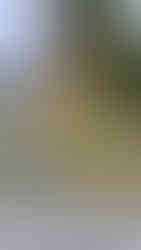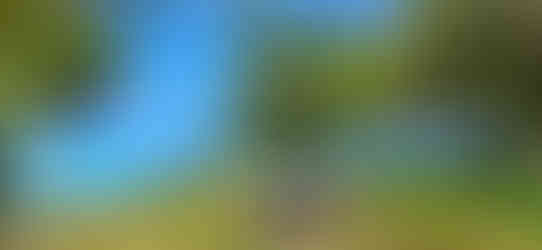Fakarava and Rangiroa, French Polynesia
- Julie-Anne Justus
- Mar 9
- 4 min read
Fakarava and Rangiroa are atolls in the Tuamotu Archipelago. There are 78 atolls in this group, but we visited just these two. We spent a day on each of them: cycling, swimming, snorkelling.
Atolls are the oldest islands in French Polynesia. An atoll is formed when coral reefs grow around an island. The island — usually volcanic — sinks over time and the land eventually disappears. But the coral reef keeps growing, and a lagoon is created inside the reef.
So unlike the mountainous islands of Tahiti, Moorea and Nuku Hiva, these island atolls are flat.
Here we are arriving in Fakarava. Flat, flat, flat.

That wonderful book Orbital, the recent Booker prizewinner, describes French Polynesian atolls seen from space as 'opal lozenges'. That's exactly what the map above looks like. (Thanks, friend, who passed on this reference today.)
About 800 people live on Fakarava. While the lagoon is 60 km long and 25 km wide, there's only 20 square kilometres of land. It's a relatively undeveloped island, with one sealed road and without the facilities to offer tours of any kind. So we went ashore, hired some bikes and explored on our own.
It's not easy cycling and taking a video at the same time, hence this wobbly video of Fakarava's main street. I'll edit the first wobbly bit when I get home.
Our ship's tourism blurb describes Fakarava as 'a remote location with limited accessibility ... a sanctuary for those looking to escape the hustle and bustle of modern life'. That sums up our brief experience, i.e. not much to do. I am not complaining.
French Polynesian atolls are famous for their diving spots. The breaks in the encircling reefs are called passes; Fakarava has two passes, one of which is the largest pass in French Polynesia. The south pass of Fakarava has the highest concentration of grey reef sharks in the world — one school comprises about 700 sharks. This is one of the only reefs where sharks are fully protected and can be found in their historical numbers. If you're a diver, check it out.
This is one of my favourite photographs so far this trip.

Two other interesting facts about Fakarava. First, in 2016, Fakarava became part of the UNESCO Biosphere Reserve. Biosphere Reserves are internationally designated protected areas with ecological significance. I hope this UNESCO effort survives the current US political madness. Second, the French painter Matisse spent time in Fakarava in 1930. He said he found his famous blue here ('Bleu Matisse'). I found it amongst the many, many blues ... see if you can find it in some of my photographs.

On a not-so-pretty note, the French conducted nuclear tests for 30 years on two atolls in the neighbouring archipelago. While we're not going near them, Fangataufa and Mururoa are fully owned by France and are permanently uninhabited. About 200 nuclear tests were conducted in lagoons, above ground and underground. One thermonuclear test was around 200 times more powerful than the bombs dropped on Hiroshima and Nagasaki. Activists now say that the testing was equivalent to a Hiroshima-sized nuclear bomb exploding in French Polynesia every week for 14 years, and 110,000 people were potentially exposed to toxic radiation.

The second atoll in the same archipelago that we visited another day was Rangiroa. Rangiroa is the largest atoll in the Tuamotos — in fact, Rangiroa (Tuamotuan for 'vast sky') is one of the largest atolls in the world. The atoll is about 80 km long and has a circumference of about 200 km, but the width of land is only 500 m. (Another 'opal lozenge'!) Hundreds of little motus — small islets and sandbars — are part of this atoll.
The blue of the ocean changes all the time depending on the depth of the water and what's below. The bright turquoise sea is shallow water covering white sand.
We had a musical welcome to the island.
Rangiroa has a population of about 2500 people, but only two motus are permanently inhabited. The biggest village has fewer than 1000 people. The main industry is the cultivation of black pearls, which are beautiful, distinctive and sold everywhere in French Polynesia. Prices range from $5 to $100,000 for a single pearl, depending on quality. (I resisted.)
We decided to skip the tour to the pearl farm and go snorkelling instead. A local boat owner (in his boat to the left of the pier above) took us out to the Aquarium, a snorkelling / dive spot where the reef forms a natural aquarium-like space. Lots of fishes! (Yes, fishes, i.e. different types.) Just to the side of the Aquarium is one of the big passes through the reef, with a strong current, so the snorkelling guides had to make sure we didn't get swept out to sea.
Rangiroa has two large passes, so the high tide creates a strong incoming current and the low tide creates a strong outgoing current. Hundreds of sharks gather at the entrance to the pass, as do stingrays. It's a visual feast for scuba divers.
Back on land we had a little stroll inland from the dock, past the dive shop full of divers kitting up. Languages spoken from all over the world, but a lot of French in particular. Understandably French Polynesia is popular with French visitors ... Not much to see in this immediate locality other than coconut trees, a local market and a dog having a dip. We saw dogs on every island, frequently in the water and often catching crabs, which appeared to be their staple diet. So we walked to one of the beaches and settled in.
It's all just so pretty! And it's all so clean: no floating litter, no plastic bags lying on the beaches.
While we didn't see them, Rangiroa is well known for its vineyards. The vines grow next to coconuts! The vineyard is Domaine Dominique Auroy, if you're interested.
Then it was time to wash off the salt for another day, and sail away as the sun set. A bit of Bleu Matisse for you too, taken holding my phone rather precariously over our balcony.
Next stop: Bora Bora
Are you reading this on your phone? Like most things, this blog looks better on a big screen. Launch your browser (Chrome, Edge, Safari) on your laptop and type in www.julie-anne.online.
























































How blue is that water. It all sounds so idyllic! Enjoy your moments as you are coming to the end of your wonderful trip.